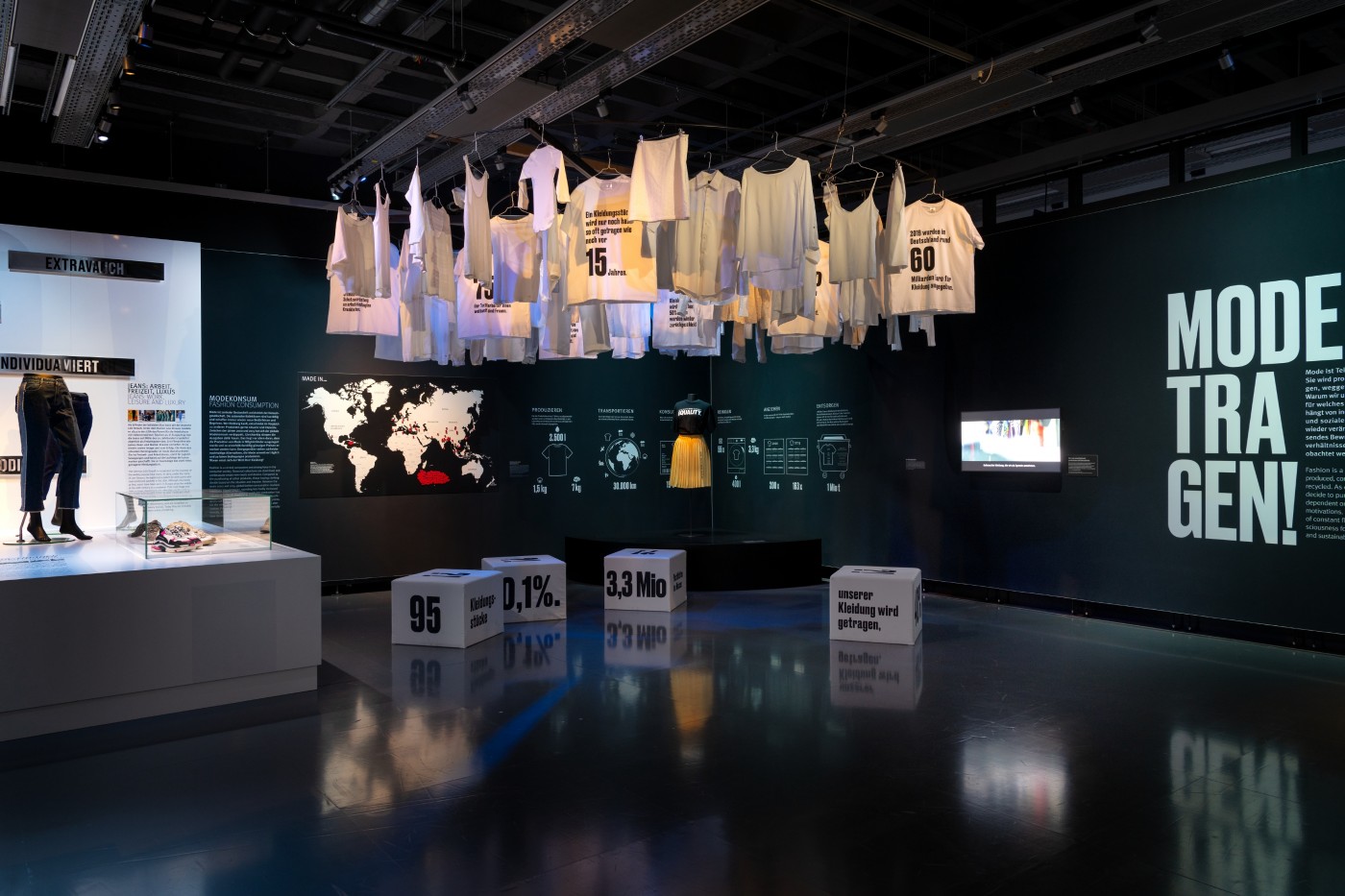- youtube
- bluesky
- Home
- About
- Costume Journal
- Membership
- Conference & Events
- Grants & Awards
- News & Social
In this week's blog, graduate trainee at the department of Art and Cultural History at the Württemberg State Museum in Stuttgart, Germany, Ruth Egger reviews the current FASHION?! Elements of Style exhibition.
How is fashion created? Who decides what’s in and what’s out? How does the meaning of clothing change, and why? These and many other questions are explored in the special exhibition ‘FASHION?! The Elements of Style’ at the Württemberg State Museum (Landesmuseum Württemberg) in Stuttgart, Germany. While the exhibition had to close shortly after opening in October 2020 it has now reopened and is extended until 24 April 2022.
‘FASHION?! The Elements of Style’ shows the highlights of international fashion history from the 1950s to the present. Curated by Maaike van Rijn, Raffaela Sulzner, Marie Helbing and Agnes Obenhuber, the exhibition is divided into four parts: ‘living fashion’, ‘making fashion’, ‘showing fashion’ and ‘wearing fashion’.
On entering the exhibition, visitors are confronted with a range of statement T-shirts (image one). One T-shirt designed by the Berlin fashion label Souvenir Official shows the flag of the European Union with one star missing, created as a reaction against the 2016 United Kingdom European Union membership referendum. A central video wall shows people describing what fashion means to them. This first section presents fashion as an integral part of our everyday lives and an essential form of communication.
The ‘vision and form’ section illustrates recurring themes in fashion design including the youthful designs of Mary Quant, provocative styles of Vivienne Westwood, future fashion like a mechanical dress from Hussein Chalayan, glamorous robes by John Galliano and elegant little black dresses by Christian Dior. One of the most charming outfits comes from the local tailor Fritz Münch who made a ‘telephone suit’ in 1954 imagining mobile forms of future communication (image three).
The exhibition presents sketches from fashion designers including Christian Dior and Marc Bohan, alongside hanging textiles ranging from natural to synthetic fibres, and new materials made from pineapple or milk (image two). A small additional room displays local dress and textile histories such as Hugo Boss demonstrating how Württemberg is still present on the world’s fashion stage (image four).
A mirrored catwalk leads the visitors to the third part of the exhibition: ‘showing fashion’. A video shows vogueing dancers, and fashion shows and magazines from the 1950s onwards illustrate how the idealized image of women changed over the last decades. Classical examples of fashion photography include works of Irving Penn to Jürgen Teller and David LaChapelle. Style icons range from Empress Elizabeth of Austria and the Catherine, Duchess of Cambridge, to David Bowie and Chimamanda Ngozi Adichie (image five). Iconic garments and their changing meanings are also analysed including leather jackets and sneakers.
The social and environmental issues of fashion consumption are detailed in the final section of the exhibition which charts the lifespan of a fashion item from production to disposal. At the centre of this section, an ensemble of the label ‘Dead white men’s clothes’ exemplifies the issue of global fashion circulation. The artist Jojo Gronostay buys second-hand clothing in Ghana, prints his label onto them and resells them as high fashion items in Europe (image six). Finally the wardrobes of four individuals are detailed as visitors ponder their own fashion habits and in totality, the exhibition captures the complexity of the fashion system.
A glimpse into the exhibition can be taken online via Google Arts & Culture. When going to Stuttgart, make sure to also visit the accompanying children’s exhibition and the fashion museum at Ludwigsburg Residential Palace.
Ruth Egger is a graduate trainee at the department of Art and Cultural History at the Württemberg State Museum in Stuttgart, Germany. In 2019, she completed a Master’s degree in Art History: Dress and Textile Histories at the University of Glasgow, Scotland. She holds a BA in History and a Master’s degree in Celtic Studies from the University of Vienna, Austria, and previously worked as a costume maker at the Salzburg State Theatre. Ruth’s main research interests are sixteenth to nineteenth-century dress history and textiles, construction techniques and makers, as well as further discourses related to fashion.
Image credits:
1. The entrance to the exhibition called ‘living fashion’ presents various statement T-shirts © Landesmuseum Württemberg, Stuttgart, photographer: Hendrik Zwietasch
2. The second section of the exhibition dedicated to the topic of ‘making fashion’ © Landesmuseum Württemberg, Stuttgart, photographer: Hendrik Zwietasch
3. This part called ‘vision and form’ shows outfits of various international and local designers © Landesmuseum Württemberg, Stuttgart, photographer: Hendrik Zwietasch
4. This small room shows examples of the Württemberg dress and textile industries © Landesmuseum Württemberg, Stuttgart, photographer: Hendrik Zwietasch
5. These style icons are displayed in the third part of the exhibition ‘showing fashion’ © Landesmuseum Württemberg, Stuttgart, photographer: Hendrik Zwietasch
6. The last section of the exhibition ‘wearing fashion’ is concerned with the global fashion cycle and questions of sustainability © Landesmuseum Württemberg, Stuttgart, photographer: Hendrik Zwietasch
Image gallery
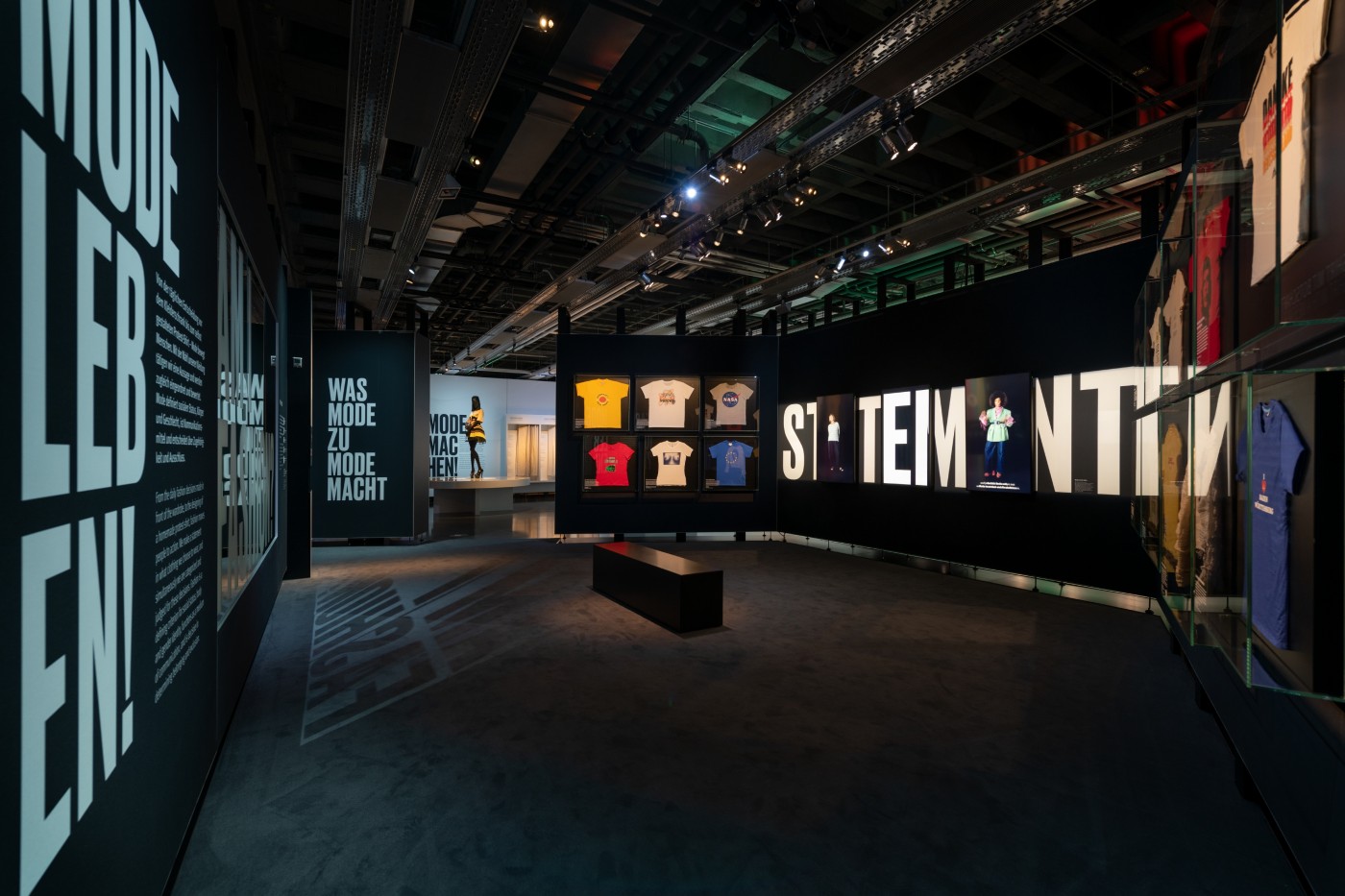
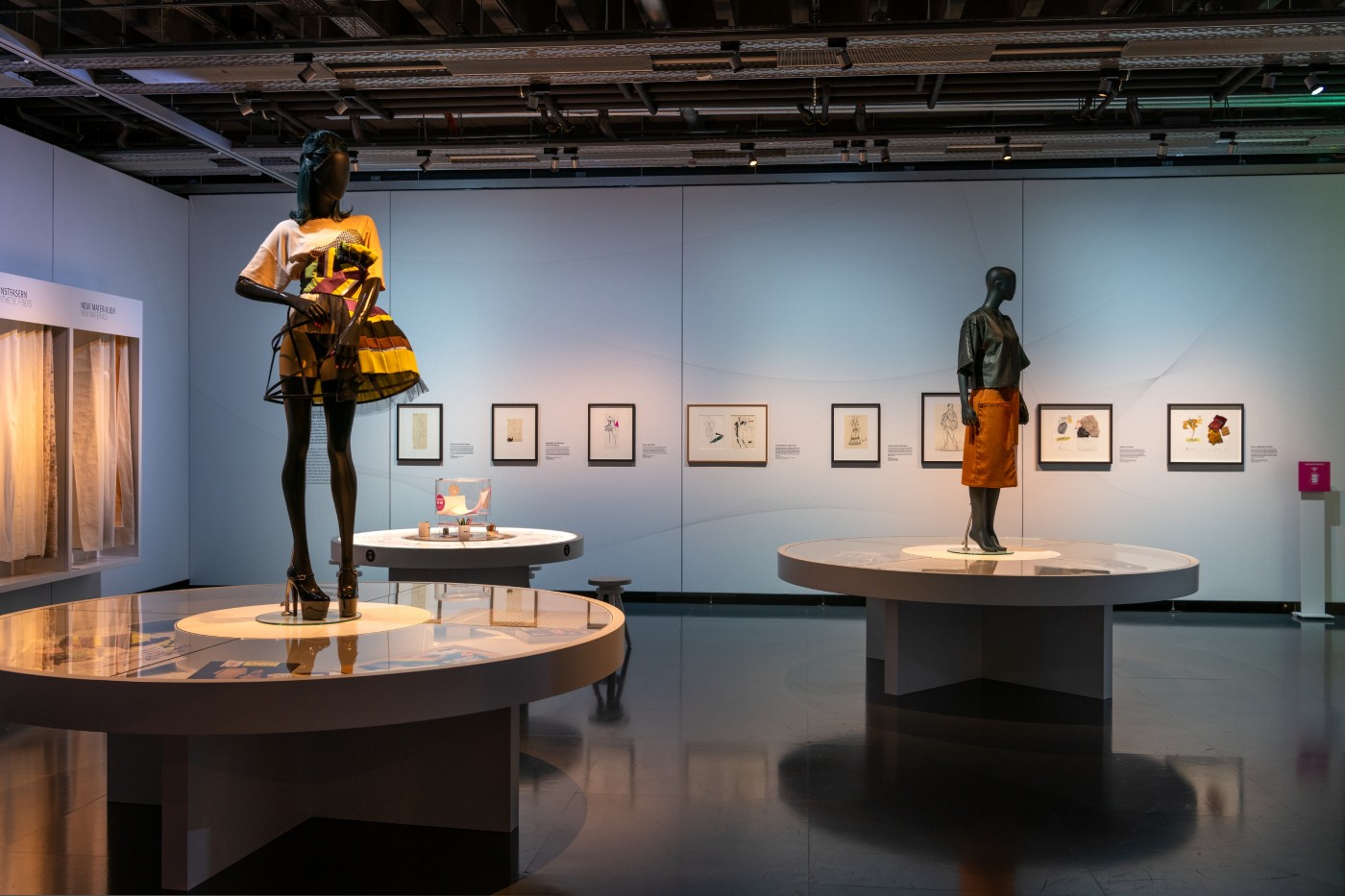
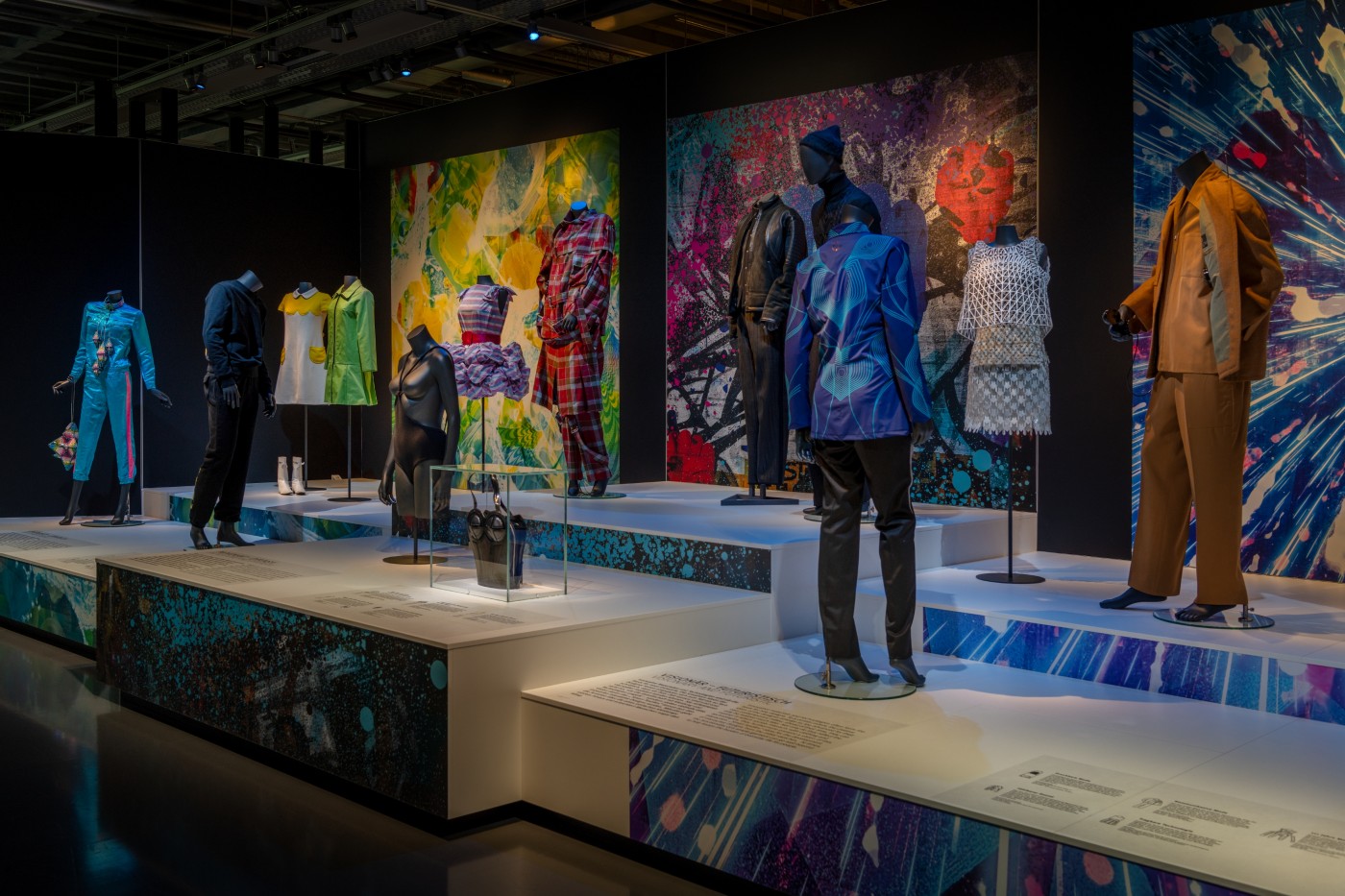
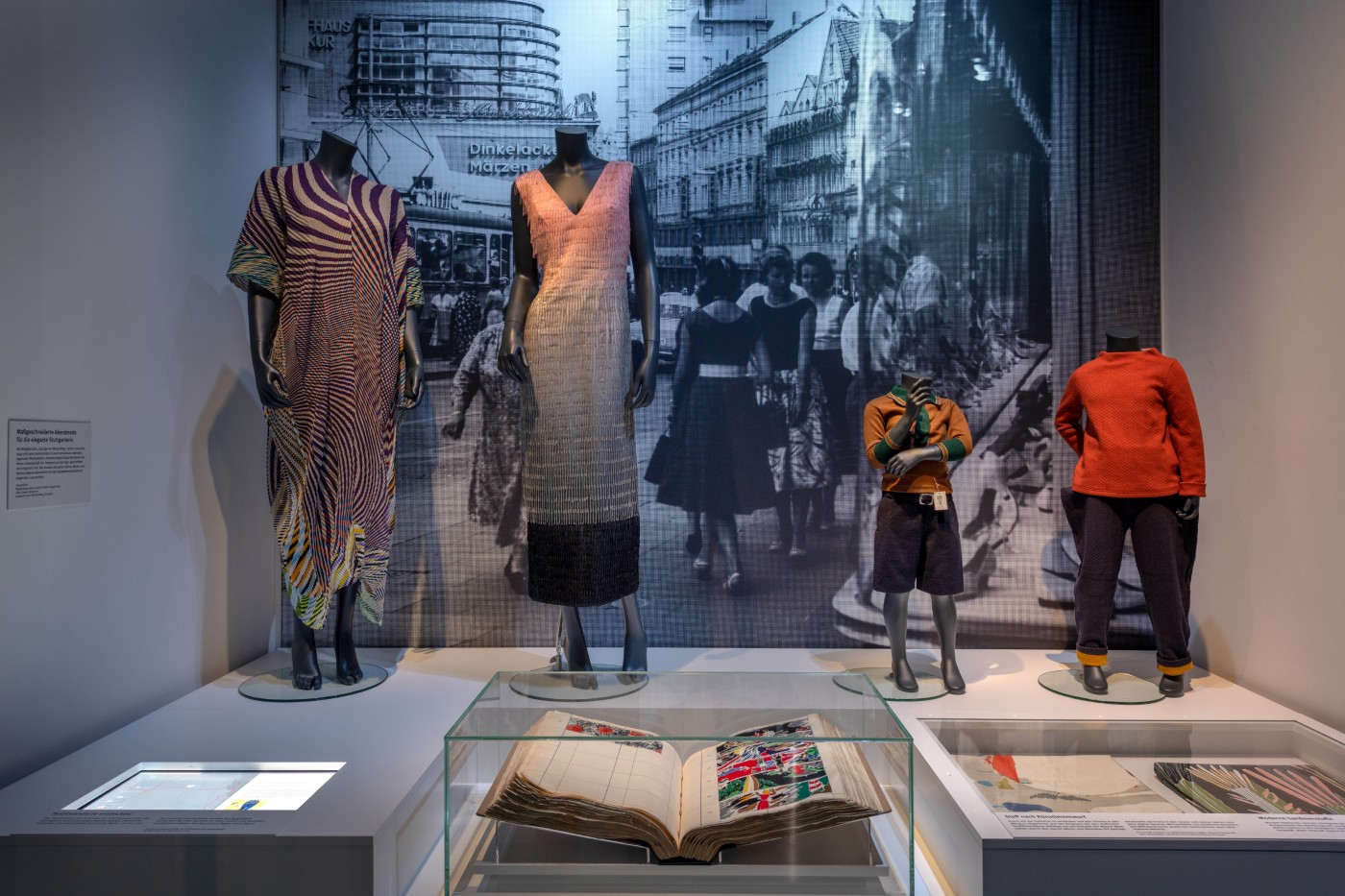
![]()
